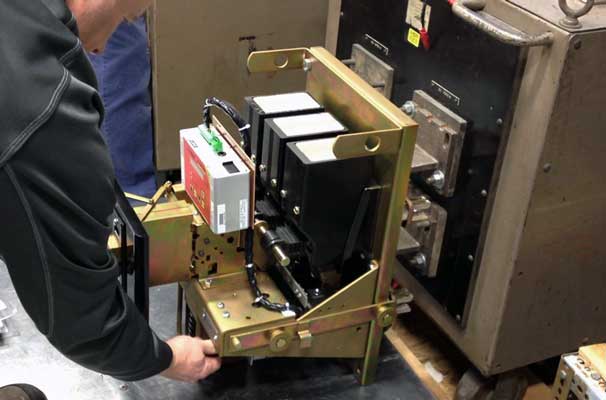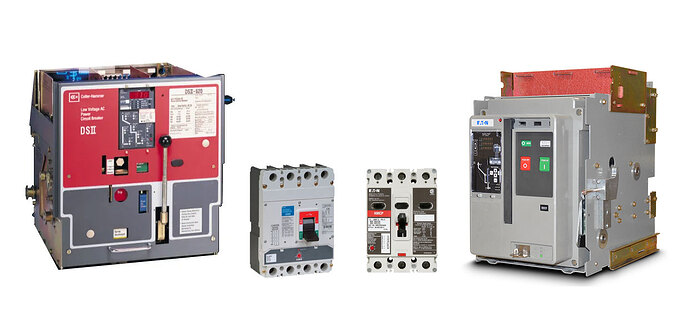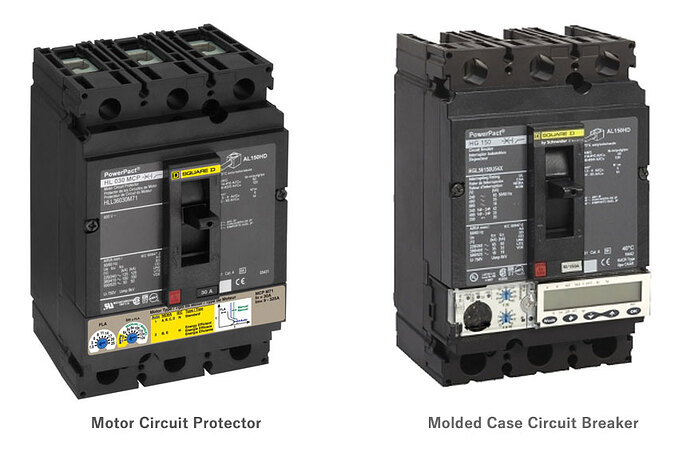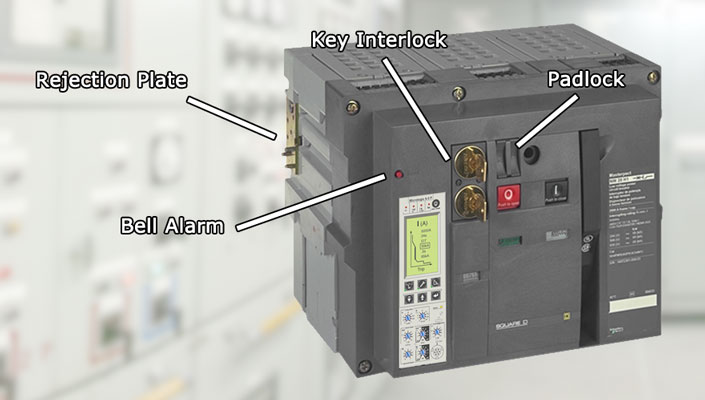Low voltage circuit protection employs a variety of circuit breakers, each designed for specific purposes and applications. These circuit breakers are broadly classified into two categories: molded case circuit breakers and power breakers.
Molded case circuit breakers are meticulously defined and adhere to specific standards, making them distinct within the realm of circuit protection. On the other hand, power breakers encompass all other types of circuit breakers that do not meet the stringent criteria of molded case circuit breakers.
Despite lacking the precise definition, power breakers play a critical role in safeguarding electrical circuits from overloads and faults, contributing to the overall reliability and safety of electrical systems.
Within these two categories, there are three primary types of circuit breakers utilized for low voltage circuit protection. Understanding the distinctions among these types is essential for effectively implementing circuit protection strategies and ensuring the uninterrupted operation of electrical systems.
1. Low Voltage Power Circuit Breakers (LVPCB)
Low voltage power circuit breakers are typically found within drawout switchgear setups. They boast replaceable contacts and are designed with field maintenance in mind, meaning they can be serviced on-site.

The term “power circuit breaker” isn’t confined to low voltage systems alone; it also encompasses medium voltage (ranging from 1000 to 72.5 kilovolts) and high voltage (exceeding 72.5 kilovolts) breakers.
Also called “Metal Frame” or “Air Frame” breakers, these units are constructed as an assembly of components housed within a welded metal frame. This frame is affixed to a draw-out mechanism, facilitating its withdrawal from the enclosure for inspection and maintenance. This design offers heightened serviceability compared to other types.
Typically, low voltage power circuit breakers carry UL listing and may be affixed with UL labels. The preferred ratings of these breakers adhere to guidelines outlined in ANSI/IEEE C37.16. Standards for low voltage AC power circuit breakers used in enclosures are as indicated in ANSI/IEEE C37.13.
Related: 10 Critical Tests for New Power Circuit Breakers
2. Molded Case Circuit Breakers (MCCB)
Molded case circuit breakers (MCCBs) are specifically designed to safeguard low voltage distribution systems. Their primary function is to protect connected equipment from overloads and short-circuits. While most MCCBs are fixed-mounted, larger versions are available in a drawout design, commonly utilized in panelboards and switchboards.
Typically, an MCCB features a single handle, which serves to switch the breaker between the On, Off, or tripped positions. Unlike some other types of circuit breakers, the closing springs in MCCBs do not need to be charged to close the primary contacts. Simply moving the handle to the On position is sufficient to close the breaker.
Molded case circuit breakers, as a class, are tested and rated according to the UL 489 Standard. Their current carrying parts, mechanisms, and trip devices are completely contained within a molded case of insulating material.
Related: Critical Maintenance for Molded Case Circuit Breakers
Sizes and Types
MCCBs are available in various sizes, categorized into small and medium frame sizes, each offering different interrupting ratings. Some MCCBs are designed to provide current-limiting capabilities, which means they can quickly interrupt short circuits without specific short-time ratings.
The traditional molded case circuit breaker has used electromechanical (thermal magnetic) trip units. Protection is provided by combining a temperature sensitive device with a current sensitive electromagnetic device, both of which act mechanically on the trip mechanism.
Molded case circuit breakers utilize one or a combination of different trip elements to provide the required circuit protection for a particular application. These trip elements protect against three conditions: thermal overloads, short-circuits and arcing ground faults.
Related: Characteristics of Circuit Breaker Trip Curves and Coordination
Motor Circuit Protector (MCP)
Instantaneous Trip (IT) Circuit Breakers are a special type of MCCB, designed without thermal trip elements, used to protect against short circuits only. Another common term for IT breakers is “Magnetic Only” or “Mag-Only” circuit breaker.
These breakers can look nearly identical to Molded Case Circuit Breakers to the untrained eye. The major difference is that MCPs do not come equipped with thermal trip functions and are specifically used in factory-assembled, tested, and listed combination motor starters where there is a separate thermal protective element, such as an overload relay.
Related: Motor Circuit Protector vs. Molded Case Circuit Breaker
3. Insulated Case (encased) Circuit Breakers (ICCB)
Insulated case circuit breakers (ICCBs) follow the testing and rating standards set by the UL 489 Standard. They borrow design elements from both molded case circuit breakers (MCCBs) and power circuit breakers. These ICCBs are usually larger in size and come with features like short time capabilities and stored energy mechanisms.
ICCBs are mainly used in fixed-mounted switchboards, but they can also be found in drawout setups. While they’re typically not meant for field maintenance, there are some maintenance tasks that can be done on-site.
In simple terms, ICCBs often have a handle or motor to charge up the springs and a button or solenoid to close the breaker. Closing an ICCB involves two steps: first, charging the springs, and then releasing them to close the breaker.
Related: Primary vs. Secondary Injection Testing for Circuit Breakers



